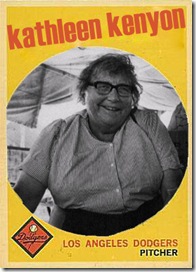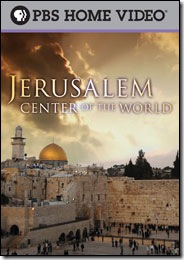I mentioned this conference before, but now I have received a detailed schedule. The conference is hosted by Mid-America Baptist Theological Seminary, and the cost is a very reasonable $50 for professionals (non-students), $25 for spouses of registered guests, and $25 for students, and that includes snacks and a banquet meal. A DVD of the conference is available for $39.95 (with free shipping). For more information, see the MABTS website. The line-up represents many of the most important scholars on the Dead Sea Scrolls today.
Thursday April 23, 2009
2:00-2:10 p.m. – Prayer, Welcome, and Instructions
2:10-2:15 p.m. – A Review of the Speakers
2:15-2:45 p.m. Steven L. Cox, Ph.D. Professor of Greek and New Testament, Mid-America Baptist Theological Seminary, Cordova, TN.
“Qumran and its Inhabitants: 170 B.C. – A.D. 70”
2:50-3:30 p.m. Peter Flint, Canada Research Chair of the Dead Sea Scrolls; Director, Dead Sea Scrolls Institute; Professor of Religious Studies, Trinity Western University
“The Three Favorite Books at Qumran. The Accuracy of our Biblical Text and Readings from the Scrolls Adopted by Various English Bible Translations”
3:30-4:00 p.m. Refreshment Break
4:00-4:40 p.m. James VanderKam, Ph.D. John A. O’Brien Professor of Theology, University of Notre Dame, South Bend, IN
“Eschatology in the Dead Sea Scrolls”
4:40-5:20 p.m. R. Kirk Kilpatrick, Ph.D. Dean of the Masters and Associates Programs, Professor, Department of Old Testament and Hebrew, Mid-America Baptist Theological Seminary, Cordova, TN
“The Messiah and the Dead Sea Scrolls”
5:30-6:45 p.m. Banquet Dinner The Betty Howard Room
7:00-7:45 p.m. Lawrence H. Schiffman, Ph.D. Skirball Department of Hebrew and Judaic Studies, New York University, New York
“Purity as Separation: Comparing Rabbinic Literature and the New Testament”
7:50-8:30 p.m. Emanuel Tov, Ph.D. Department of Bible, Hebrew University, Jerusalem
“The Biblical Dead Sea Scrolls”
8:35-8:55 p.m. A Panel Discussion with Speakers on Select Topics
Friday, April 24, 2009
8:30-9:10 a.m. Michael R. Spradlin, Ph.D. President, Chairman of the Faculty; Chairman and Professor, Department of Evangelism; Professor of Old Testament and Hebrew, Practical Theology, and Church History, Mid-America Baptist Theological Seminary, Mid-America Baptist Theological Seminary, Cordova, TN
“The Isaiah Scroll of Qumran: Current Analysis, Opinion, and Implications”
9:15-9:55 a.m. Steven M. Ortiz, Ph.D. Associate Professor of Archaeology and Biblical Backgrounds, Director of the Charles C. Tandy Archaeology Museum, Southwestern Baptist Theological Seminary, Fort Worth, Texas
“Myth, Media Hype, and Multivocality: Storytelling and Qumran Archaeology”
10:00-10:40 a.m. Lawrence H. Schiffman, Ph.D. Skirball Department of Hebrew and Judaic Studies, New York University, New York
“Israel, the Dead Sea Scrolls, and Jewish History”
10:40-11:15 a.m. Refreshment Break
11:15-11:55 a.m. James VanderKam, Ph.D. John A. O’Brien Professor of Theology, University of Notre Dame, South Bend, IN
“High Priests in the Dead Sea Scrolls”
12:00-12:40 p.m. Emanuel Tov, Department of Bible, Hebrew University, Jerusalem
“The Scribes of Qumran”

